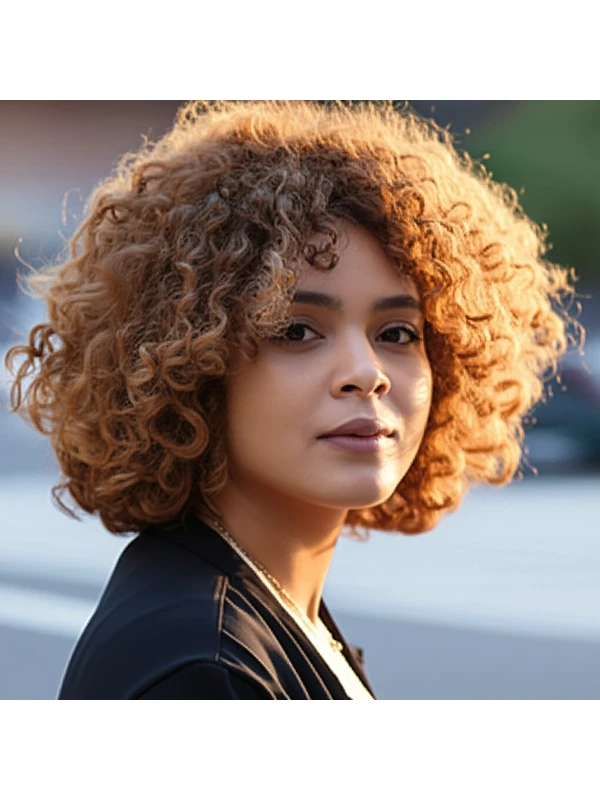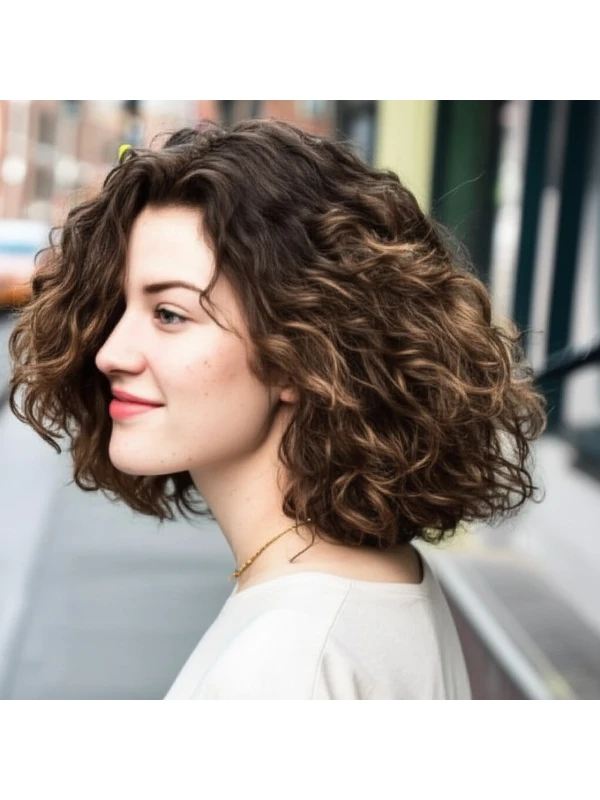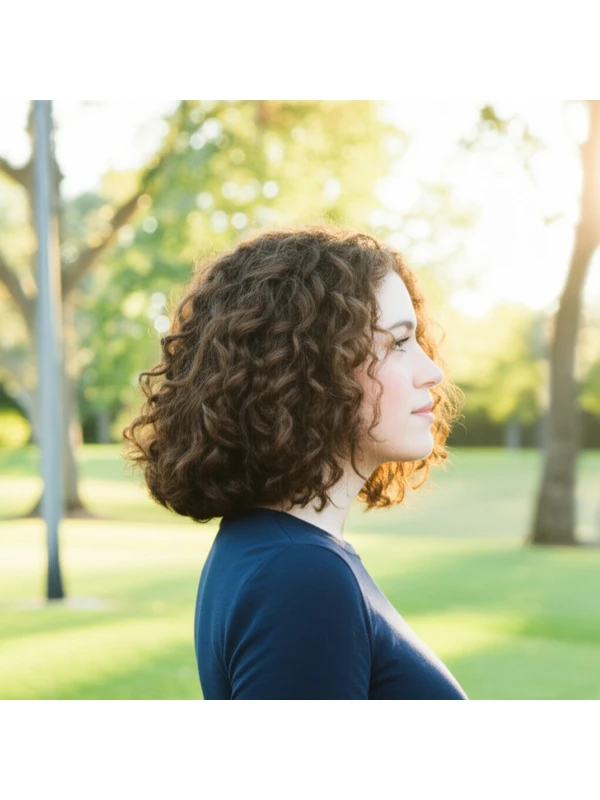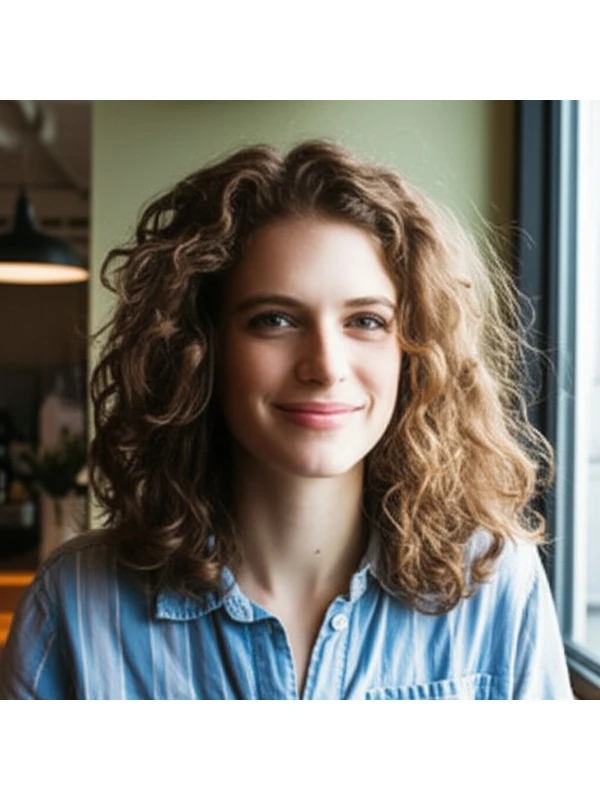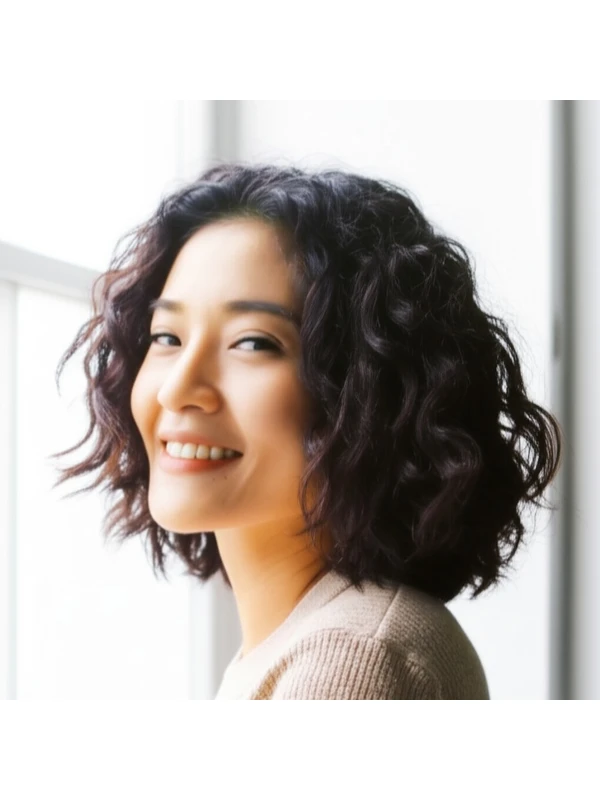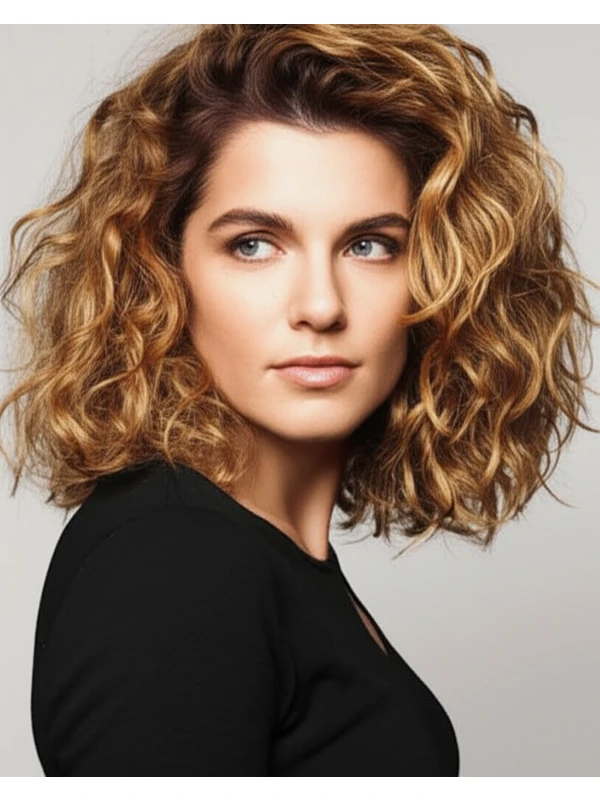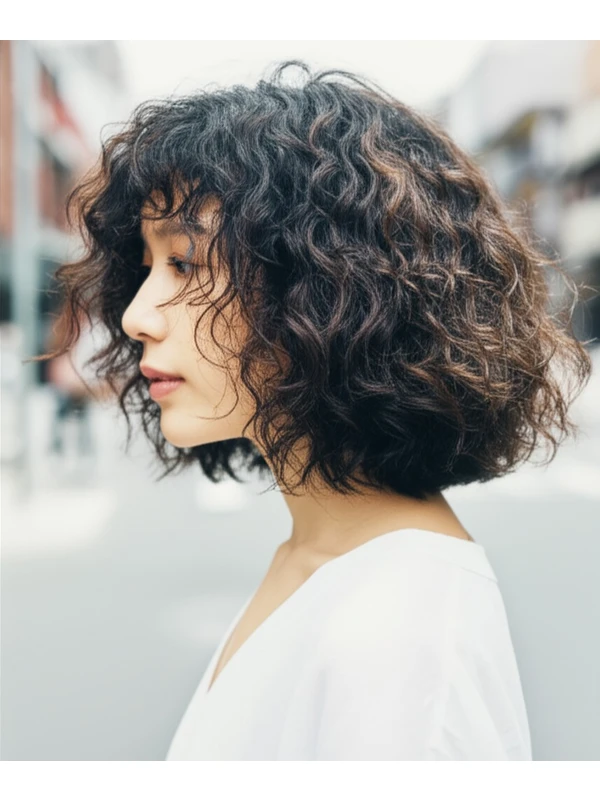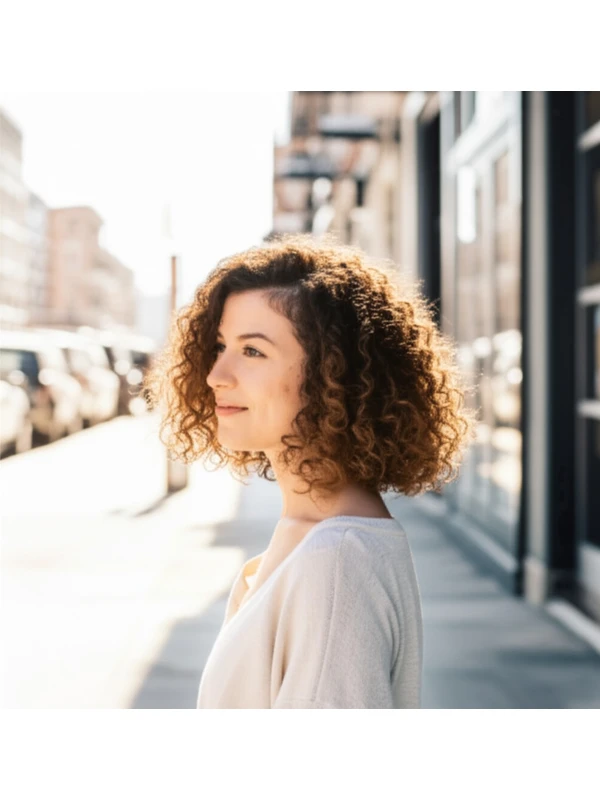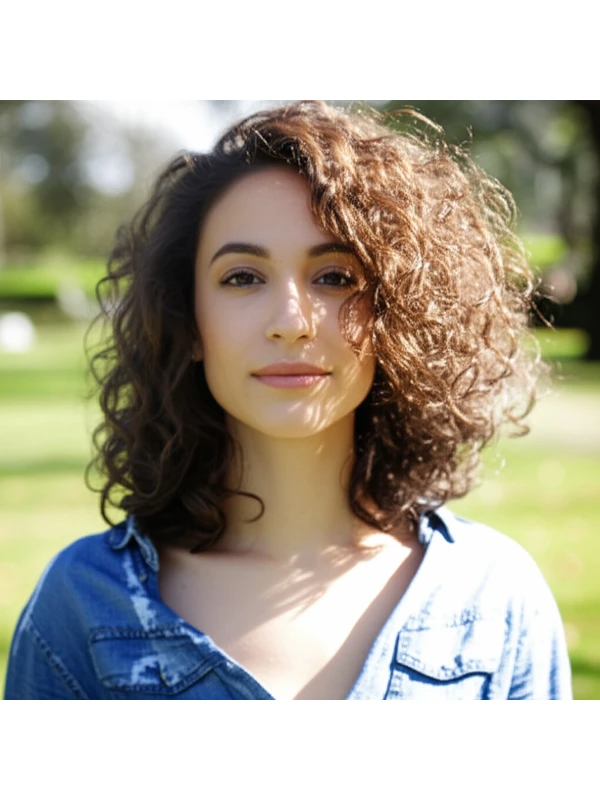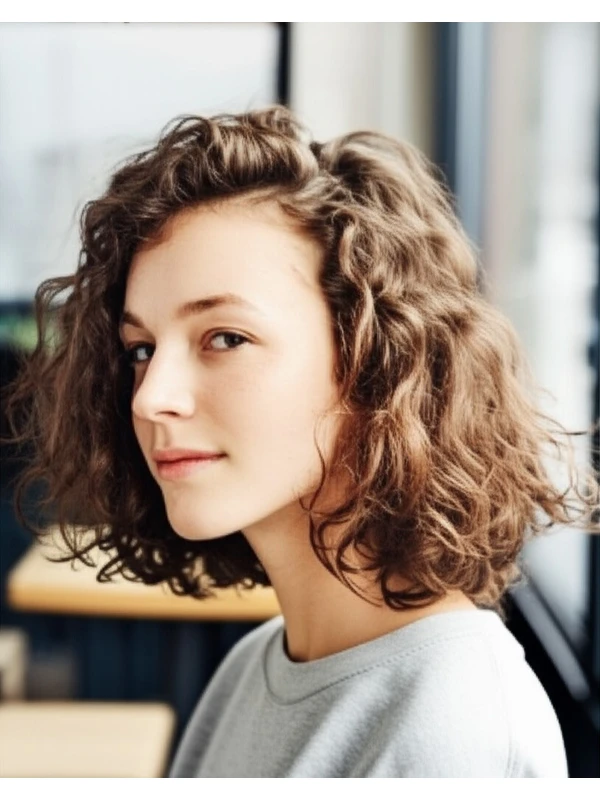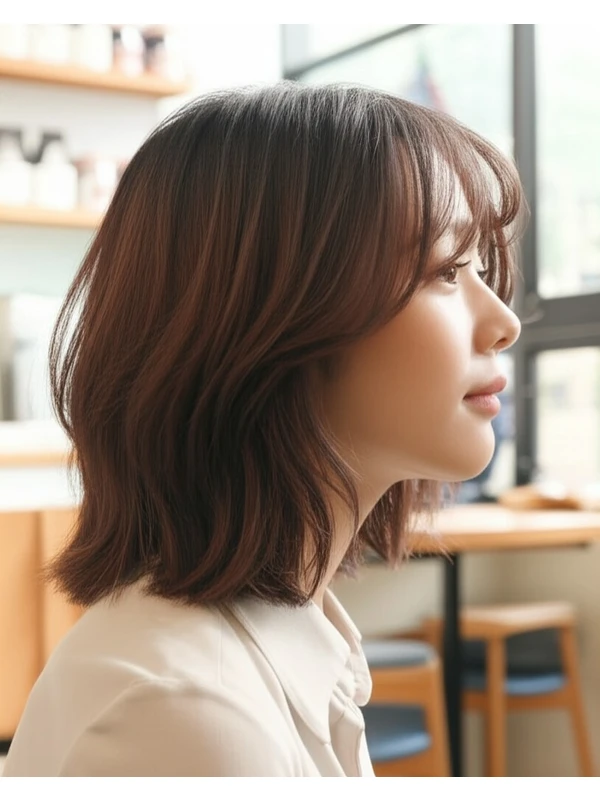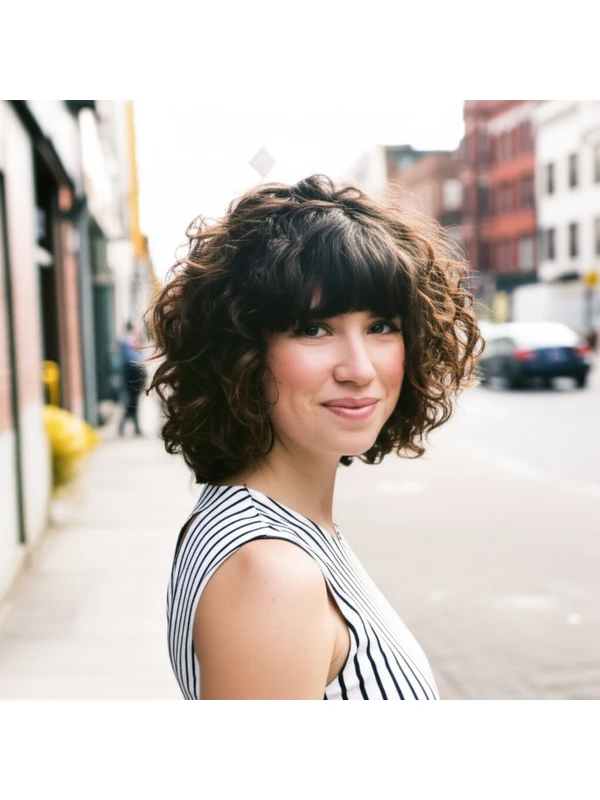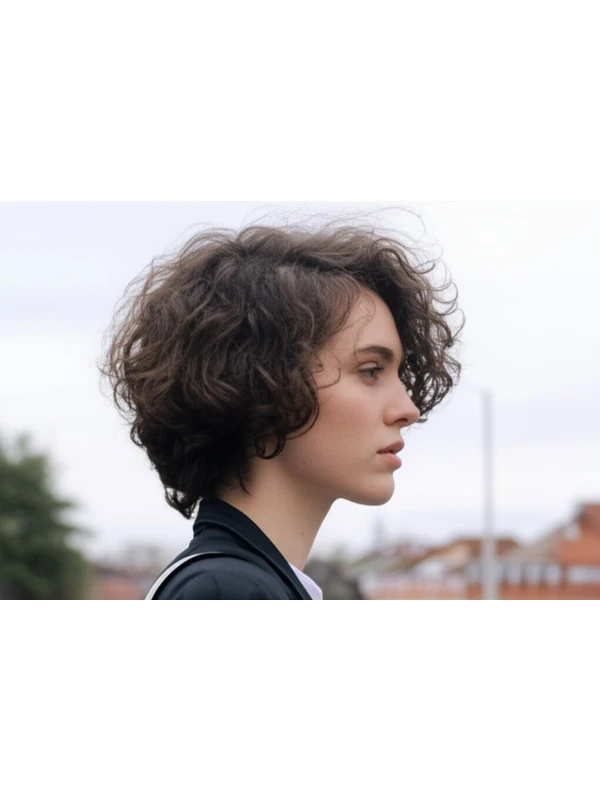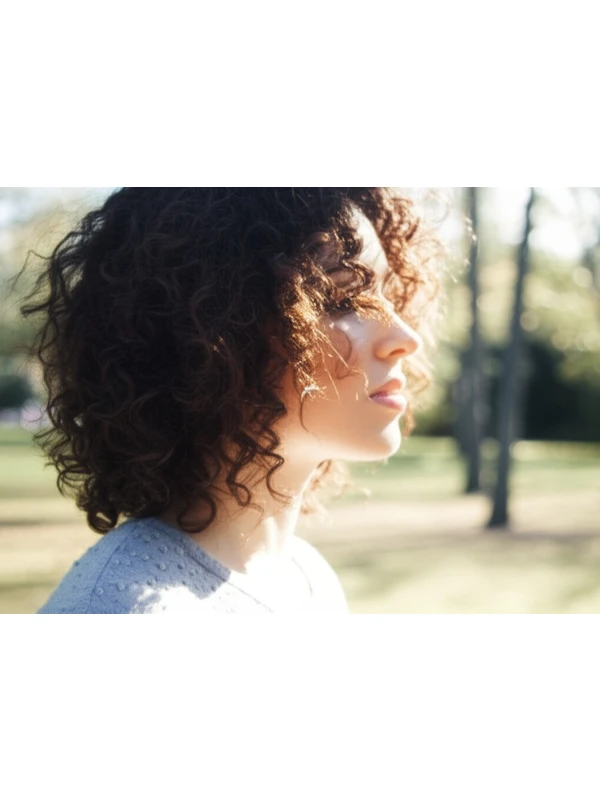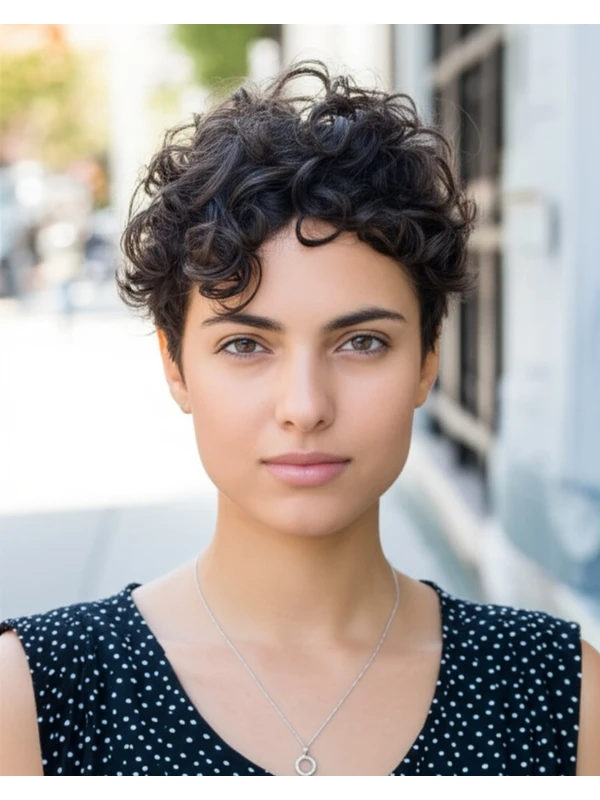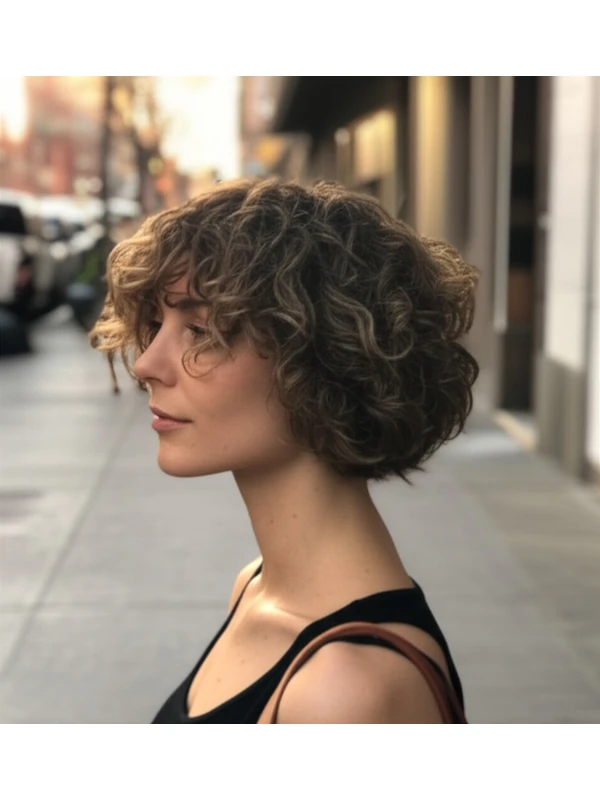#The Curly Lob: Your Guide to Effortless Chic
The curly lob – a universally flattering hairstyle that’s both modern and manageable. It's more than just a trend; it’s a style adaptable to countless personalities and hair types. This guide will break down everything you need to know about embracing the curly lob, from finding your perfect length to mastering everyday styling.
#1) Background & Definition: What is a Curly Lob?
The term "lob" stands for long bob – essentially, a haircut that falls between chin-length and collarbone-length. When combined with curls, it creates a style brimming with movement and personality. Key features include layers (essential for curl definition!), soft edges (avoiding harsh lines), and volume at the roots.
- Geometry: The curly lob is typically cut with varying lengths to encourage natural curl patterns. It’s not one uniform length; instead, it's layered to create shape and bounce.
- Length Ranges: Generally falls between 6-12 inches from the crown of your head. This can vary significantly based on hair texture – coils will appear shorter than looser curls due to shrinkage.
- Alternative Names: Curly Shag Bob, Layered Lob with Curls, Textured Curly Mid-Length Cut.
#2) Face Shape Fit: Finding Your Angle
The curly lob is incredibly versatile but understanding how it interacts with your face shape can maximize its impact.
- Oval: Lucky you! The curly lob suits oval faces beautifully in almost any length and part variation. A side part adds asymmetry and interest.
- Fringe Option: Curtain bangs or wispy, layered fringe enhance the softness.
- Round: A lob with longer layers that fall below the chin helps elongate a round face. Avoid blunt cuts at jaw level as they can emphasize width. Volume on top is key!
- Fringe Option: Side-swept bangs soften the cheekbones and create an angled effect.
- Square: Soften those angles! A curly lob with rounded layers and a slightly off-center part helps to diffuse the sharpness of a square face.
- Fringe Option: A textured, piecey fringe softens the forehead.
- Heart: The curly lob balances a heart-shaped face by adding volume at the jawline. Avoid too much height at the crown as it can exaggerate the width of the forehead.
- Fringe Option: A soft, wispy fringe or side-swept bangs work well to balance a wider forehead.
- Diamond: A curly lob with layers around the cheekbones highlights your best feature – your eyes! Volume at the roots and chin area creates balance.
- Fringe Option: A blunt, eyebrow-grazing bang can be striking, but proceed with caution; it might accentuate angles.
- Oblong (Long): A curly lob that hits just below the collarbone adds width to a long face. Layers are crucial for creating volume and preventing a drawn-out look.
- Fringe Option: A full fringe or curtain bangs can shorten the appearance of the face.
#3) Body Proportions & Height Guidance: Tailoring Your Lob
Your body type influences how your hairstyle looks, too!
- Petite: Shorter lobs (chin to just below jawline) are generally more flattering than longer lengths which can overwhelm a smaller frame.
- Average: Most lob lengths work well for average height and proportions. Experiment with volume placement – higher volume adds height; lower volume grounds the look.
- Tall: Longer lobs (collarbone-length or slightly below) create balance, preventing you from looking too elongated.
- Narrow Shoulders: Layers that add width around the shoulders visually broaden them. Consider a side part to further enhance asymmetry and visual width.
- Broad Shoulders: Avoid excessive volume at the shoulders; opt for layers that flow downwards instead of outwards. A center part can create symmetry, balancing broader shoulders.
- Short Neck: Lobs cut above the collarbone visually lengthen the neck. Avoid styles with too much bulk at the nape of the neck.
- Long Neck: Longer lobs (collarbone-length or longer) help to fill out a long neck and create more visual balance.
#4) Works Best With Hair Types & Densities: Finding Your Match
The curly lob is adaptable, but understanding your hair’s characteristics is key.
- Straight/Wavy: While traditionally associated with curls, the lob can work beautifully on wavy hair too! Focus on layers to create movement and avoid a limp look.
- Curly (2A-3B): This is where the curly lob truly shines! The layers define curl patterns and add bounce.
- Coily (4A-4C): Shrinkage is everything. A lob on coily hair will appear much shorter than it is when dry. Communicate this to your stylist! Less layering might be needed to avoid excessive frizz.
- Fine Hair: Layers are essential for creating volume, but too many can make fine hair look thin. Talk to your stylist about strategic layering.
- Medium Hair: The curly lob suits medium density hair perfectly – you have enough body to support the style without it looking flat or overly voluminous.
- Thick Hair: Layering is critical for removing weight and preventing a bulky, triangular shape. Thinning shears can also be helpful.
- Shrinkage Factor: Coily and tightly curled hair experiences significant shrinkage (50-100%). Account for this when determining length!
#5) Styling Variations: From Casual to Chic
The curly lob isn't one-dimensional; it’s a canvas for creativity.
- Sleek vs. Textured: Sleek involves smoothing and defining curls with product, while textured embraces the natural curl pattern with minimal manipulation.
- Middle vs. Side Part: A center part creates symmetry, while a side part adds asymmetry and volume at the roots.
- Fringe Variations: Curtain bangs, wispy fringe, blunt bang – each alters the overall look dramatically.
- Occasion Styling:
- Casual: Air-dry with curl cream or mousse for effortless texture.
- Office: Smooth out frizz with a serum and define curls with a gel.
- Evening: Add volume at the roots with volumizing spray, then define curls with a stronger hold product.
#6) Maintenance: Keeping Your Lob Looking Fresh
Regular trims are vital for maintaining shape.
- Trim Cadence: Every 6-8 weeks to remove split ends and maintain the lob’s geometry.
- At-Home Routine: Gentle cleansing, deep conditioning weekly, leave-in conditioner daily.
- Heat vs. Air-Dry: Minimize heat styling! Embrace air-drying whenever possible. When using heat, always use a protectant spray.
- Product Checklist: Sulfate-free shampoo & conditioner, Leave-in Conditioner, Curl Cream/Mousse (for definition), Gel or Stronger Hold Styler (for hold), Hair Serum (to tame frizz).
- Estimated Daily Styling Time: 15-45 minutes, depending on hair type and desired style.
#7) Grow-Out Roadmap: Evolving Your Look
The curly lob doesn’t just grow out; it transforms!
- Months 1-3: The shape is most defined. Regular trims are crucial to maintain the layers.
- Months 4-6: The length starts to feel longer, and layering might become more apparent. Consider a slight adjustment to the face framing layers.
- Maintaining Shape: Ask your stylist for dust-offs between full trims – these remove split ends without compromising length.
#8) Color Pairings: Enhancing Your Lob’s Dimension
Color can elevate a curly lob from good to gorgeous!
- Cool Undertones (Pink, Blue): Jewel tones like amethyst or sapphire complement cool skin tones and enhance curl definition.
- Warm Undertones (Gold, Copper): Warm highlights such as caramel or honey add warmth and dimension to the hair.
- Low-Commitment Options: Balayage or babylights provide subtle dimension without a harsh root line.
#9) Season & Occasion Guide: Adapting Your Style
- Spring/Summer: Lighter, brighter colors; air-dried texture with minimal product for a breezy feel.
- Fall/Winter: Richer tones and deeper highlights; more defined curls with stronger hold products to combat humidity.
- Work: Sleek and polished – minimize frizz and define curls neatly.
- Weddings: Romantic, voluminous style – consider adding braids or twists.
- Parties: Experiment with bold colors, accessories (headbands, clips), and playful styling techniques.
#10) Cost & Time: What to Expect at the Salon
- Salon Time: Typically 1.5 - 3 hours, depending on hair length, density, and desired style complexity.
- Estimated Price Range: Moderate to high – expect a range of $80-$250+ (relative terms).
#11) Pros & Cons: Weighing the Options
Pros: Universally flattering, versatile styling options, manageable length, highlights curls beautifully. Cons: Requires regular trims, can be time-consuming to style if you desire a specific look, shrinkage needs careful consideration for coily hair.
#12) Salon Consultation Script: Your Questions Answered
Here are some questions and points to bring up during your salon consultation:
- "I'm interested in a curly lob – what length would you recommend based on my curl pattern/shrinkage?"
- “Can we discuss how layering will work with my hair density?”
- "I want to maintain volume at the roots. How can we achieve that?"
- "What products do you suggest for styling and maintaining this cut, given my hair type?"
- “Could you show me examples of curly lobs on people with similar face shapes/hair types as mine?”
#FAQs: Your Burning Questions
- Will a curly lob make my hair look frizzy? Strategic layering and the right products can minimize frizz.
- How do I prevent my curls from falling flat? Volume-boosting products at the roots are essential!
- Can I wear a hat with a curly lob? Absolutely! The shorter length makes it easier to accommodate hats.
- Is this style suitable for all ages? Yes! The curly lob can be adapted to suit any age group with adjustments in length and styling.
- How do I deal with my hair shrinkage after the cut? Discuss your curl pattern & desired length with your stylist before they start cutting, so they account for shrinkage.
- Can a curly lob work on damaged or chemically treated hair? Yes, but it's crucial to assess the condition of your hair and adjust the layering accordingly. Your stylist can advise on whether this style is suitable given your hair’s health.
